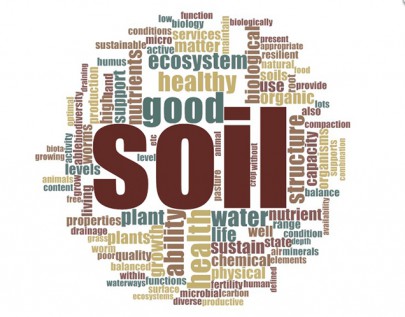Survey: Stakeholder views on soil health
In this section

Stakeholder views on soil health
- A baseline understanding of the different ways people understand soil health and value soil as a resource,
- Information on which aspects of soil health are currently being monitored, and where gaps are perceived, and
- A network of interested parties who would like to keep in touch with progress in the project.
Summary of the Stakeholder views on soil health
Demographics
A total of 235 respondents completed the survey. They were predominately male (64%) between the ages of 40 and 60 (53.8%), self-identify as NZ European/Pākehā/New Zealander (78.6%), from the North Island (79.3%), and a farmer/grower/producer/ landowner (40%) in drystock (57.4%) farming. Respondents identified as: NZ European/Pākehā/New Zealander (78.6%), Māori (14.8%), European (9%), Asian (2%), and Pacific Islander (1%). Respondents were primarily from Auckland (23.2%) or Waikato (18.2%) in the North Island and Southland (7.1%) or Canterbury (5.6%) in the South Island. Participants included farmers/growers/producers/landowners/home gardeners (42%), researchers (30%), consultants (26%), policy makers/planners (23%), and Māori representatives (10%).
Definitions of soil health
A variety of ways were used by respondents to define soil health. There was a recurring emphasis on the importance of soil to support life, humans, and production, and on the interactions between physical, chemical, and biological properties. The respondents’ soil health definitions are grouped into: Bio-physical properties; What can I see and identify; Soil’s ability to produce and support life; and the holistic or mauri view.
Gaps in soil health and resilience
There were 124 respondents who thought there were gaps in our current understanding and assessment of soil health and resilience. These insights identified five themes:
- Education and communication of current knowledge
- Societal values of soil health
- Monitoring, assessment and modelling
- Bio-physical processes and dynamics
- Policy and Planning
Managing and monitoring soil health
A series of questions were asked about how respondents manage and monitor soil health. Overall, 89% of respondents indicated they monitored soil health or quality as part of their work or on their land. A very high proportion of farmers reported they managed and monitored soil health. However, across the different types of farm categories the proportion of farmers/landowners who monitored soil health was not significantly different. A variety of monitoring techniques are used by farmers to monitor the health of their soil and these include: changing stocking rates or using lighter stock (31%), rotating stock around paddocks (15%), standing off stock during wet times (21%), and cropping (15%). Many also reported they followed biological/holistic/organic methods of farming (31%) and used soil tests (30%) to determine type, timing, and application rates of fertilisers (7%). The aspects of soil health that respondents believe should be monitored parallel the gaps in understanding and assessment of soil health.
Soil values
To better understand how people value soil as a resource, survey respondents were asked how much they agreed with a range of statements about soil health and the importance of soil health in the provision of a range of services. There was support for changes in how society views soil health, and a need to understand people’s attitudes and opinions toward the different dimensions of soil health. In this survey, respondents agreed that soil health is very important to New Zealand’s economy, environment, and society but that soil health is currently undervalued in New Zealand policy. From a personal and cultural perspective, soil health is also important to respondents.
With regards to ecosystem services, respondents thought that soil health is very important for the provision of food, fibre, and fuel. Overall, most respondents thought that soil health is important for the provision of water regulation, water purification/waste treatment, climate regulation, natural hazards, or supporting biological services.
Conclusions
This survey will contribute to the development of an integrated soil health framework that can be used by a wide range of end-users, from primary industry, landowners, iwi/hapū, to central and local government. An adaptive approach to stakeholder involvement is an important aspect of this project. While we have identified a key set of initial stakeholders, we anticipate that this list will evolve and grow throughout the life of the project.
Booth P, Kalaugher E, Stevenson B, Harmsworth G, Kannemeyer R, 2019. Soil health and resilience: Oneone ora, tangata ora – Stakeholder survey report. Landcare Research Contract Report LC3334. Manaaki Whenua – Landcare Research.